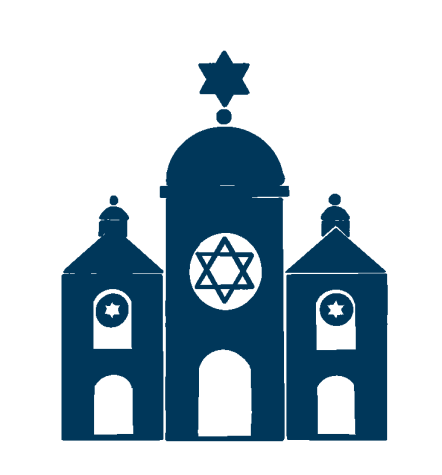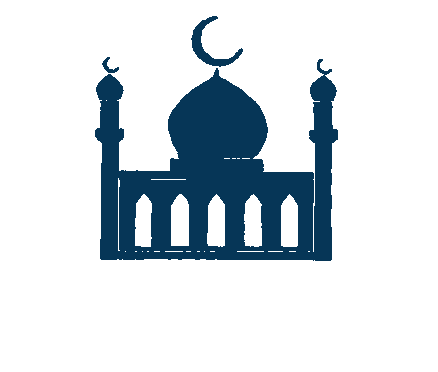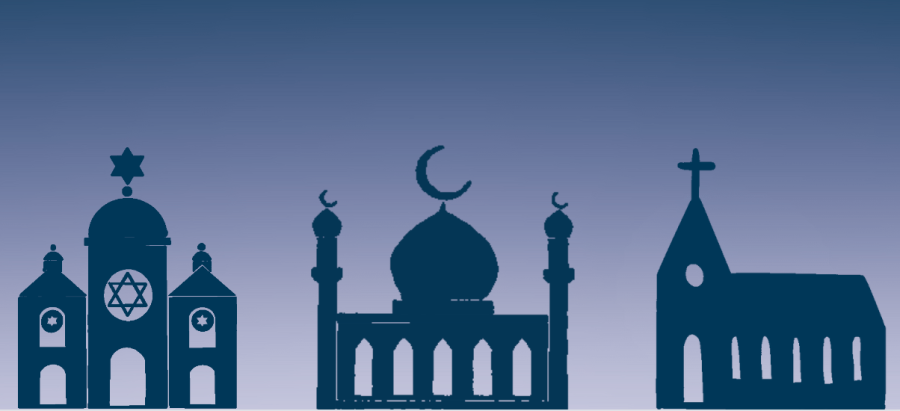Exploring religious diversity on campus
November 7, 2022
Many American teenagers rarely observe religious behavior in their schools, and a majority say they rarely or never discuss religion with friends. The religious beliefs of many students are still maintained, through reading religious scriptures and practicing customs on a weekly basis. With over 4,000 recognized religions in the Bay Area, here are some of Lynbrook students’ religious views.
Judaism:
Judaism, a monotheistic religion developed  among ancient Hebrews, is characterized by a belief in one transcendent God who revealed himself to Abraham, Moses and the Hebrew prophets in accordance with Scriptures and rabbinic traditions.
among ancient Hebrews, is characterized by a belief in one transcendent God who revealed himself to Abraham, Moses and the Hebrew prophets in accordance with Scriptures and rabbinic traditions.
Jewish people believe in the Torah, laws given to the Israelites at Sinai — the principal site of divine revelation. They believe that they must follow God’s laws which govern everyday life, like Kehillah — doing your share to make the community better.
There are three central groups of Jewish people who have different interpretations of the Torah: Orthodox, Conservative and Reform Jews. Orthodox Jews believe that all practices in the Torah must be obeyed without question. Whereas, Conservative and Reform Jews believe that the ancient laws and practices have to be interpreted for modern life with an infusion of contemporary sources, and with more concern for community practices rather than rituals. Unlike Orthodox and Conservative Jews, who mainly encourage the practice of Yiddish and other traditional Jewish languages, Reform Jews allow everyone, men and women, to sit together and speak both Hebrew and their local languages.
“I follow Judaism partly because I can show my devotion to God in my own modern interpretation,” junior Peter Aguirre said. “That’s why I really value my faith. Even the text in the Bible allows for flexibility, maintaining Jewish core principals, while also adjusting for changes in today’s society.”
In nearly 4,000 years of historical development, Jewish people and their religion have displayed remarkable adaptability and continuity. As they encountered different civilizations, they assimilated foreign elements and integrated them into their own social and religious systems, while still maintaining unbroken religious traditions.
“Jews are able to align with other people’s cultures easily because we’ve been doing it for generations,” Aguire said. “Going to a majority Asian school, I’ve been able to align myself with others because I see many similarities between my culture and theirs.”
Islam:
Islam is the second largest religion in the world, with about 1.8 billion Muslims worldwide. Although its roots reportedly retract further, scholars typically date the official creation of modern Islam to the 7th century, still making it one of the youngest of the major religions.
Muslims are monotheistic and worship one god they call Allah. Followers of Islam aim to live a life in complete submission to Allah. They believe that nothing can happen without Allah’s permission, but humans still have free will.
complete submission to Allah. They believe that nothing can happen without Allah’s permission, but humans still have free will.
“I am a servant of God,” senior and Muslim Student Association president Abdulrahman Naveed said. “Every Muslim believes they are the servants of God. We have to make sure every action we do aligns with His commandments. So in the future, if I want to do something, I have to make sure that it is something that will please God.”
Muslims follow five basic pillars essential to their faith including: Shahada, to declare one’s faith in God and belief in Muhammad; Salat, to pray five times a day; Zakat, to give to those in need; Sawm, to fast during Ramadan; and Hajj, to make a pilgrimage to the holy city of Mecca at least once during a person’s lifetime.
According to Islamic texts and tradition, an angel named Gabriel visited Muhammad — the chosen recipient and messenger of the word of God through the divine revelations — in 610 A.D. while meditating in a cave. The angel ordered Muhammad to recite the words of Allah. After Muhammad’s passing, a series of leaders, known as caliphs, became successors to Muhammad and rapidly helped spread the religion.
Muslim prayer is often conducted in a Mosque, but it also contains teaching and community spaces. Muslims pray five times a day facing the Kaaba, the house of Allah, in Mecca. The mosque is available for any and at all prayer times. Muslims often attend the mosque on Friday for midday prayer, teaching and sermon.
“I go to the mosque regularly,” Naveed said. “I love reading the Quran there. By the time I was in third or fourth grade, I dropped out of public school and began to go to a religious school at the Mosque.”
While Muslims aim to clear up misconceptions about their faith, the religion continues to prosper.
Christianity:
Christianity, a major religion stemming from the life, teachings and death of Jesus of Nazareth — the Christ, or the Anointed One of God — has become the largest religion in the world. Its largest groups are the Roman Catholic Church, the Eastern Orthodox Churches and the Protestant Churches. It is believed that Jesus was crucified on a cross to offer the forgiveness of humanity’s sins and was resurrected three days after his death before ascending to heaven. 
Although their faith tradition is historical, Christians believe that encounters with the divine do not occur in the realm of timeless ideas but among ordinary humans through the ages. The vast majority of Christians focus their faith in Jesus Christ as someone who exists in the present reality.
An element of Christianity is the focus of salvation or redemption. The believers in the Church picture themselves in a plight from which they need rescue.
“I make mistakes, I have my own faults,” senior and Agape president Yechan Lee said. “Every time those things happen, every time I do something that’s not necessarily great, it’s the understanding that I’m not perfect, but Jesus will take care of my sins.”
As a result of both the Renaissance, which glorified human achievement and encouraged autonomy and of Reformation ideas, where believers were responsible in conscience and reason for their faith, autonomy in expressing Christian faith developed. In the 18th century, the Enlightenment further proclaimed optimistic views of human perfectibility that challenged formerly essential views of human limits.
The Bible includes important scriptures that outline Jesus’s teachings, the lives and teachings of many prophets and disciples and offers instruction for how Christians should live. The Bible is a collection of 66 books written by various authors divided into two parts: The Old Testament, which is also recognized by followers of Judaism, and the New Testament.
“The Bible is a guide on how to live,” Lee said. “I believe that it’s one way that God speaks to me in terms of what he wants me to do. It builds a solid foundation for me.”
The complexity of Christianity is revealed by the thousands of separate churches, sets and denominations that make up the modern Christian landscape. Although the many sects have different views and uphold separate traditions, the core of their faith is centered around the life of Jesus Christ.
Christianity, a major religion stemming from the life, teachings and death of Jesus of Nazareth — the Christ, or the Anointed One of God — has become the largest religion in the world. Its largest groups are the Roman Catholic Church, the Eastern Orthodox Churches and the Protestant Churches. It is believed that Jesus was crucified on a cross to offer the forgiveness of humanity’s sins and was resurrected three days after his death before ascending to heaven.
Although their faith tradition is historical, Christians believe that encounters with the divine do not occur in the realm of timeless ideas but among ordinary humans through the ages. The vast majority of Christians focus their faith in Jesus Christ as someone who exists in the present reality.
An element of Christianity is the focus of salvation or redemption. The believers in the Church picture themselves in a plight from which they need rescue.
“I make mistakes, I have my own faults,” senior and Agape president Yechan Lee said. “Every time those things happen, every time I do something that’s not necessarily great, it’s the understanding that I’m not perfect, but Jesus will take care of my sins.”
As a result of both the Renaissance, which glorified human achievement and encouraged autonomy and of Reformation ideas, where believers were responsible in conscience and reason for their faith, autonomy in expressing Christian faith developed. In the 18th century, the Enlightenment further proclaimed optimistic views of human perfectibility that challenged formerly essential views of human limits.
The Bible includes important scriptures that outline Jesus’s teachings, the lives and teachings of many prophets and disciples and offers instruction for how Christians should live. The Bible is a collection of 66 books written by various authors divided into two parts: The Old Testament, which is also recognized by followers of Judaism, and the New Testament.
“The Bible is a guide on how to live,” Lee said. “I believe that it’s one way that God speaks to me in terms of what he wants me to do. It builds a solid foundation for me.”
The complexity of Christianity is revealed by the thousands of separate churches, sets and denominations that make up the modern Christian landscape. Although the many sects have different views and uphold separate traditions, the core of their faith is centered around the life of Jesus Christ.
Ending Note:
“We all just need to come together.” Aguirre said. “It doesn’t matter what faith you follow because the fates are all one in the same. In conclusion, it’s about love, it’s about compassion and it’s about treating your neighbors with respect. We just need to live this life with love.”



































































